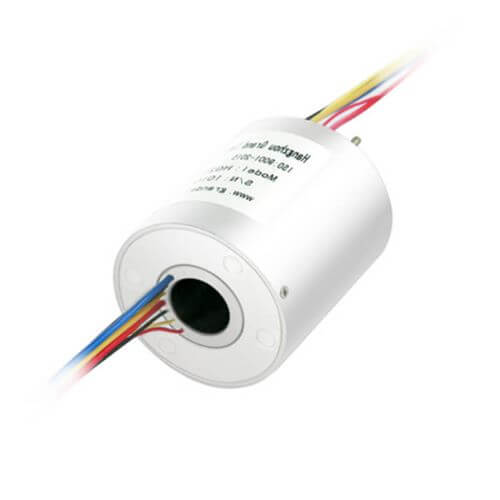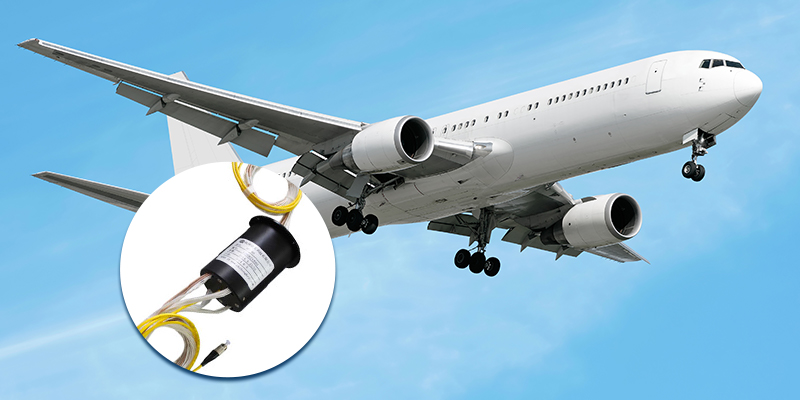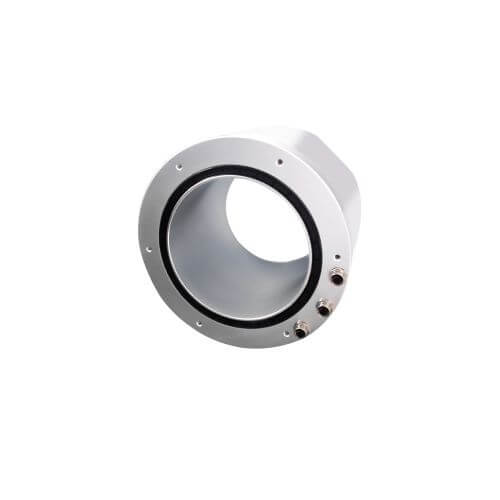A comprehensive look into the world of miniature through bore slip rings. Discover their design, functioning, and key features alongside their real-world applications and top brands available in the market. This guide also provides useful tips on selecting the most suitable slip ring and how to maintain it for optimal performance.
Introduction to Miniature Through Bore Slip Ring
Miniature Through Bore Slip Rings are a marvel of contemporary engineering – compact, powerful devices that bridge the challenge of transferring electrical signals from a stationary to a rotating part in a wide array of mechanical and electronic devices. Central to their unique design is the feature that gives them their name: a central bore – or hole – that cuts through the center of the ring, granting significant installation and wiring flexibility.
The purpose of these slip rings lies in their ability to deliver a steady, uninterrupted flow of power or data from a stationary base to rotating components. They dismantle the otherwise problematic issue of tangled wires that are typical in rotating systems. Despite being tiny, they play a crucial role in maintaining the integrity of the signal, even under continual rotation.
Applications for Miniature Through Bore Slip Rings are abundant and varied. They form an integral part of numerous modern machinery and electronic systems. Commonly, you’ll find these rings serving pivotal roles in sectors such as medical technology – powering precise, rotating devices like CT scanners, in the telecommunications industry enabling satellite and radar dishes to turn without causing signal interference, security systems, like surveillance cameras, robotics, and many more. Coupling compact design with high performance, these slip rings are transformative, bringing an enhanced degree of efficiency, reliability, and overall functionality to numerous devices.

Critical Components and Design of the Miniature Through Bore Slip Ring
The design of a Miniature Through Bore Slip Ring is an intricate balance of engineering ingenuity and material science, honed to accommodate complex and varied functional requirements. The primary components of these slip rings are:
- Rings: These conductive rings are typically made from copper alloy or other precious metals. They are mounted concentrically on the rotating shaft and act as electrical pathways for power and data transmission between the rotating and stationary components.
- Brushes: To ensure smooth and continual contact with the rings, brushes made from precious metals or graphite are utilized. The brushes are held against the rings by spring pressure, allowing for the transfer of electrical signals from the stationary base to the rotating part.
- Core: The central bore or core, as its name suggests, is the hollow cylindrical center of the slip ring. This core is crucial for customization, making it possible to accommodate various wiring and installation configurations that are dependent on the application requirements.
- Housing: To protect the delicate interior components from dust, dirt, moisture, and external environmental factors, durable housing is essential. Usually made from metal or sturdy plastic, the housing provides structural support and maintains the alignment of the slip ring components, ensuring they function optimally and reliably.
The compact design of the Miniature Through Bore Slip Ring is a testament to its versatility. In applications where space constraints and weight limitations are critical, these slip rings shine. The miniaturization results in a trade-off, as physical size reduction can create challenges, such as heat dissipation, electrical interference, and maintaining system precision. However, the innovative design and carefully selected materials used in these slip rings address these potential issues.

By accommodating both power and data transmission in a minimalistic design, miniature through bore slip rings cater to the needs of various industries. The compact design also allows for easy integration into existing systems, reduces the overall mechanical system’s weight, and enhances performance by tackling the ongoing challenge of miniaturization, ensuring that these slip rings remain a cornerstone of modern technological innovation.
Functioning of Miniature Through Bore Slip Rings
Although Miniature Through Bore Slip Rings may appear complex, the principles underpinning their operation are straightforward. Here’s a step-by-step elucidation of their function:
- Power/Data Input: The power or data – in the form of electrical signals – first enters the slip ring through the stationary interface, usually via wiring connected to the outside of the slip ring.
- Signal Transfer: This electric input then encounters the brushes of the slip ring. The brushes, held by spring pressure, make constant and direct contact with the rings.
- Rotation: The rings are attached to the rotor (the rotating part of the slip ring). As the rotor turns, the electrical signals are transferred from the stationary brushes to the rotating rings.
- Output: The electric signals, carried by the rings, are then transmitted from the rotor to the desired rotating mechanism connected to the slip ring, thereby fulfilling their intended task.
The central bore is an instrumental aspect of the through bore slip ring’s design and operation. This hollow space enables the carriage of wires, shafts, or other additional equipment right through the center of the rotary joint. As such, the bore’s dimension can be customized to fit specific applications, making this slip ring versatile in different usage cases.
The ability to produce a hollow central bore, while maintaining the structural integrity and operational reliability of the slip ring, is one of the key engineering feats in the miniature through bore slip ring design. This feature allows miniature slip rings to be integrated seamlessly into a variety of equipment without compromising their operation, due to factors such as size and space constraints or the need for additional pass-through capabilities. Thus, the central bore is not merely a useful feature, but rather an essential component of these slip rings, underpinning their adaptability, flexibility, and widespread utility in many modern applications.
Key Features of Miniature Through Bore Slip Rings
Miniature Through Bore Slip Rings pack an array of impressive features into their small, yet powerful design. Here’s an exploration of their unique characteristics:
- Compact Design: Their most immediate feature is the compact design. Despite their small size, these slip rings cater to power transmission, data signals, and multiple circuits all at once. The miniaturization allows for integrations into spaces where size and weight are significantly important.
- Central Bore: The core or central bore is one of the defining features of this type of slip ring. This hollow center provides enormous versatility, allowing wires, pneumatic and hydraulic lines, or other assemblies to pass through the device effortlessly.
- Lightweight: Their compactness lends to another advantageous feature – being lightweight. This attribute is crucial in applications such as aerospace or mobile systems, where weight can greatly influence the efficiency and practicality of the design.
- Variety of Circuits: Miniature through bore slip rings can be customized to handle a wide range of circuits, from simple power delivery to complex data signal transmissions, making them valuable in a diverse array of applications.
- High Rotational Speed: Despite their small footprint, these devices don’t compromise on operational speed. The miniature slip rings can support high rotational speed, further extending their applicability to industries requiring swift movements.
Besides their unique design features, additional attributes make these slip rings stand out:
- Resilience: Miniature slip rings are designed to resist environmental and operational adversity. Whether dust, moisture, high temperatures, or vibration, they perform reliably under harsh conditions.
- Technological Advances: Some high-end models incorporate advanced technologies such as fiber-optic rotary joints (FORJs) for high-speed data transmissions or wireless slip rings to reduce mechanical wear and tear.
- Long Lifespan: Due to the high-quality materials used and the careful engineering involved in their manufacturing, these slip rings exhibit a longer lifespan compared to similar devices.
In conclusion, the features and additional attributes of Miniature Through Bore Slip Rings speak volumes about their technological prowess. Whether it’s their compact design and the utility of their central bore, or their ability to withstand challenging environments while ensuring optimal performance, these devices illustrate the very epitome of engineering excellence. They’re the unseen, unsung heroes in countless pieces of modern equipment, enabling seamless functioning and contributing to various technological advancements.
Applications of Miniature Through Bore Slip Rings
Owing to their unique features and adaptability, Miniature Through Bore Slip Rings have found numerous applications across a range of industries. Here is an overview of some prominent sectors where these devices have proven invaluable, as well as examples of specific equipment and processes that depend on the bore slip ring:
- Medical Technology: In the medical field, precision and reliability are of paramount importance. Miniature through bore slip rings find wide application in various diagnostic and therapeutic devices, such as:
- CT Scanners: These slip rings allow continuous power and data transmission between the stationary base and the rotating gantry, ensuring seamless image capture.
- MRI Machines: The slip rings enable the machine’s rotating components to function smoothly without data interference, fostering accurate imaging.
- Surgical Robots: Employing slip rings enhances the dexterity and precision of robotic arms during surgical procedures.
- Telecommunications: For the telecommunications industry, uninterrupted signal transmission is vital. Miniature through bore slip rings can be found in:
- Satellite Antennas: These slip rings allow satellite dishes to rotate without tangling wires or experiencing any signal loss.
- Radar Systems: By ensuring smooth rotation and reliable signal transfer, slip rings contribute significantly to the operational efficiency of radar antenna systems.
- Security Systems: Surveillance and security systems require a constant, uninterrupted flow of data. The applications of miniature slip rings include:
- CCTV: These devices facilitate the cameras’ free 360-degree rotation without affecting data transmission quality, granting wider and more effective surveillance coverage.
- Robotics: In robotics, smooth motion and efficient control are essential. Miniature through bore slip rings are employed in:
- Robotic Arms: Their compact design, long lifespan, and resistance to wear make these slip rings suitable for robotic arms in industrial, medical, and research settings.
- Renewable Energy: Sustainable energy systems often involve rotational components, and the miniature through bore slip rings play an indispensable role in their functioning:
- Wind Turbines: These slip rings transfer electrical energy generated by the rotating blades to the stationary power grid, enabling effective power production.
- Aerospace: In these industries, applications require high-performance components that can withstand harsh conditions and provide reliable operation. Miniature through bore slip rings cater to:
- Flight Control Systems: Slip rings ensure the accurate transmission of control signals to crucial components, such as actuators and instruments, in the flight system.
- Manufacturing Machinery: In manufacturing, smooth motion control and data transmission are crucial for productivity and equipment longevity. Slip rings can be integrated into:
- Rotary Tables: They facilitate efficient power transmission between the stationary base and the rotating table, optimizing the assembly line or machining process’s effectiveness.

The adaptable and versatile nature of Miniature Through Bore Slip Rings makes them an indispensable asset in a variety of equipment and processes across industries. Their ability to operate seamlessly and reliably across various applications contributes significantly to the overall efficiency and effectiveness of the systems they’re integrated into, further emphasizing their importance in modern technology.
Miniature Through Bore Slip Ring Comparison with Other Types of Slip Rings
As diverse as they are in their applications, slip rings come in various types and sizes, each with its unique specifications and advantages. Comparisons between the Miniature Through Bore Slip Rings and other common types of slip rings throw light on the numerous ways they significantly differ from each other:
- Standard Slip Rings: These traditional slip rings are larger than their miniature counterparts and therefore occupy more space. While they can handle more load due to their size, they may not be suitable for applications where space is limited. Conversely, the compact nature of Miniature Through Bore Slip Rings makes them ideal for space-constrained settings, without compromising on functionality.
- Capsule Slip Rings: Capsule or mini slip rings are similar in size to miniature through bore slip rings but lack a central bore. This absence limits their adaptability in scenarios where wires or other equipment need to pass through the center of the ring. Miniature through bore slip rings, with their hollow center, provide more versatility in this regard.
- Pancake Slip Rings: Pancake slip rings have a flat design and are suitable for applications with a height constraint but plenty of radial space. However, they’re generally lower in performance compared to the cylindrical miniature bore slip rings. The latter can handle higher speeds and demonstrate better heat dissipation characteristics.
- Mercury Slip Rings: These slip rings employ mercury for electrical conduction, facilitating a nearly frictionless interface and a very low electrical noise. However, mercury poses serious environmental and safety risks. Miniature Through Bore Slip Rings, on the other hand, uses traditional contact materials like precious metals, providing a safer choice for various applications.
- Wireless Slip Rings: These slip rings transfer data and power electromagnetically, eliminating the physical wear and tear associated with mechanical parts. Yet, they typically offer less power handling capability and shorter effective range. More so, electromagnetic interference could also impact their performance. In contrast, Miniature Through Bore Slip Rings provide a reliable, wired connection, ensuring a constant and robust power/data transmission.

While Miniature Through Bore Slip Rings offer a wide array of benefits like compactness, versatility, and reliability, there may be some trade-offs. For instance, they might not handle as high loads as the larger slip rings, or they could face limitations in terms of the maximum number of circuits as compared to their larger counterparts. Additionally, their size might make them more delicate to handle during installation or maintenance.
However, it’s essential to note that the type of slip ring best suited for a particular application depends on several factors, such as space availability, load requirements, the number of circuits, and environmental conditions. Thereby, in contexts where performance, size, and versatility are of prime importance, the Miniature Through Bore Slip Rings find their true mark of excellence.
Top Brands
| No. | Manufacturer | Website |
|---|---|---|
| 1 | Hangzhou Grand Technology | https://www.grandslipring.com/ |
| 2 | Moog Inc. | https://www.moog.com/ |
| 3 | Stemmann-Technik | https://www.stemmann.com/en/home |
| 4 | Schleifring | https://www.schleifring.com/ |
Hangzhou Grand Technology

Hangzhou Grand Technology Co., Ltd. started as a special slip ring manufacturer in 2011. Grown into slip rings, rotary joints, and slip ring assembly experts of today with 6,000 square meter manufacture complex.
Obtained ISO9001, Rosh, CE, and GJB9001B certificates a number of slip rings, rotary joint patents, and proud of our products can meet military grade. Collaborated with universities, institutes, and renowned factories across Asia and Europe including Panasonic, SIEMENS, CSIC, SAMSUNG, HUAWEI, etc.
Moog Inc.
Moog is a leading supplier of high-performance slip rings for various industries, including aerospace. Among their offerings, Moog’s SR Series Slip Rings are designed for the demanding environments of helicopters, excelling in performance, reliability, and customization potential.
Stemmann-Technik
Stemmann-Technik, a part of the Conductix-Wampfler Group, offers a broad range of slip rings, including solutions for helicopters. Their Livietta Slip Ring Assemblies are designed explicitly for harsh and demanding environments in the aviation sector, providing reliable signal and power transmission.
Schleifring
Schleifring is a well-known manufacturer of electromechanical systems, including slip rings customized for various industries. Their Aircraft Slip Rings cater specifically to helicopters, offering robust performance, low wear, and high reliability to meet the challenges of aviation applications.
If you want to know more about other slip ring manufacturers, you can read Top 10 Slip Ring Manufacturers in China, Top 10 Slip Ring Manufacturers In the USA Market 2023, and Top 10 Slip Ring Industry Key Manufacturers 2023.
Choosing the Right Miniature Through Bore Slip Ring
Selecting the appropriate Miniature Through Bore Slip Ring for your specific application is crucial to ensuring optimal performance, reliability, and longevity. Here are some key factors to consider when making your choice:
- Bore Size: The central bore size is one of the most important factors when choosing a slip ring. It determines the accommodation capacity for wires, hydraulic lines, or any other elements passing through the ring. Choose a bore size that aptly caters to your requirements without excessive unused space, which increases the device’s overall size.
- Circuit Requirements: Assess the type and number of circuits you need for your application. This includes the electric power circuits, data signal lines, and control lines. Ensure that the slip ring you select supports the number of circuits you need without compromising on performance.
- Current and Voltage Capacity: The slip ring should be capable of handling the required current and voltage for your application. Consider both the nominal and peak current requirements, and select a slip ring that can efficiently manage these values without causing overheating or electrical noise issues.
- Rotational Speed: The slip ring’s operational speed should harmonize with the intended rotational speed of the equipment it is integrated into. Choosing a slip ring rated for the appropriate rotational speed ensures seamless operation and reduces wear and tear.
- Environmental Factors: Consider the environmental conditions your slip ring would be subjected to, such as temperature, moisture, dust, and vibration. Select a model designed to withstand the specific environmental challenges your application presents, ensuring reliable long-term performance.
- Contact Material: The choice of contact material, typically precious metals or other metal alloys, affects the slip ring’s durability and electrical performance. Choose a material with low contact resistance, minimal electrical noise, and excellent wear resistance to guarantee a longer service life.
- Transmission Medium: When transmitting high-speed data or other sensitive signals, consider whether your application calls for a conventional electrical slip ring, a fiber-optic rotary joint (FORJ), or a hybrid model that incorporates both. Select the appropriate transmission medium to ensure high-quality and reliable signal transmission.
- Ease of Maintenance: The ease of cleaning, lubricating, or replacing slip ring components, such as brushes and contacts, should be factored in when choosing a suitable slip ring. Some designs may require more frequent maintenance, while others offer extended maintenance-free periods.
- Customization: Often, off-the-shelf slip rings may not entirely meet the needs of your specific application. In such cases, find a manufacturer that offers custom solutions tailored to your requirements, ensuring peak performance and compatibility with your equipment.
By keeping these factors in mind when selecting a Miniature Through Bore Slip Ring, you can ascertain its suitability for your application, ensuring that it meets the requirements while providing reliable and long-lasting service in your equipment.
Miniature Through Bore Slip Ring Maintenance Tips
Regular maintenance of a Miniature Through Bore Slip Ring is crucial for ensuring its optimal performance, longevity, and safety. Maintaining these delicate tools mostly revolves around cleaning, lubrication, and timely replacement of worn-out parts. Here are some tips and best practices to follow:
- Regular Inspection: Conduct periodic inspections to check for signs of wear or damage, including pitting or grooving on the slip ring surface, fraying or breakage of brush wires, or other physical abnormalities. Promptly address any issues noticed during these checks.
- Cleaning: Accumulated dirt and debris on the slip ring or brushes can cause performance issues and accelerate wear. Regular cleaning, preferably with approved cleaning agents, helps prevent such issues. Remember that the procedure should be carried out carefully to avoid damaging the delicate rings and brushes.
- Lubrication: Depending on the slip ring’s design and material, it may require lubrication for smooth operation and to reduce friction. Use only the recommended lubricant and apply it judiciously to not over-lubricate, which can lead to attracting more dust or dirt.
- Worn-out Component Replacement: Brushes or other wear-prone components have a finite lifespan and will require periodic replacement. Always replace worn-out parts promptly and only with components of the correct specifications to maintain performance and prevent possible damage to other slip ring components.
- Temperature Monitoring: Overheating can signal an overloading problem or insufficient cooling. Regularly monitor the slip ring’s temperature during operation and take corrective actions if it exceeds the manufacturer’s recommended range.
- Humidity Control: High humidity can promote the formation of a film on the contact surface, which can impede smooth operation. If your application exposes the slip ring to high humidity, consider investing in a dehumidifier or other humidity control measures.
- Proper Handling: Miniature Through Bore Slip Rings are delicate devices. Handle them carefully during installation, maintenance, and operation. Avoid dropping or applying excessive force, which may result in mechanical damage.
- Manufacturer’s Recommendations: Always consult the manufacturer’s guidelines for specific maintenance procedures and schedules. These recommendations are tailored to the unique design and material specifications of your particular slip ring model.
By following these maintenance tips and adhering to the recommended practices, you can maximize the lifespan and efficiency of your Miniature Through Bore Slip Rings, ensuring they continue to deliver reliable and efficient service in your applications.
Conclusion
With miniaturization becoming a significant trend across industries, the role of miniature through bore slip rings is ever more essential. Combining innovative design with compact structure, these slip rings promise to bring efficiency and versatility to numerous applications.
See What We Can Do

